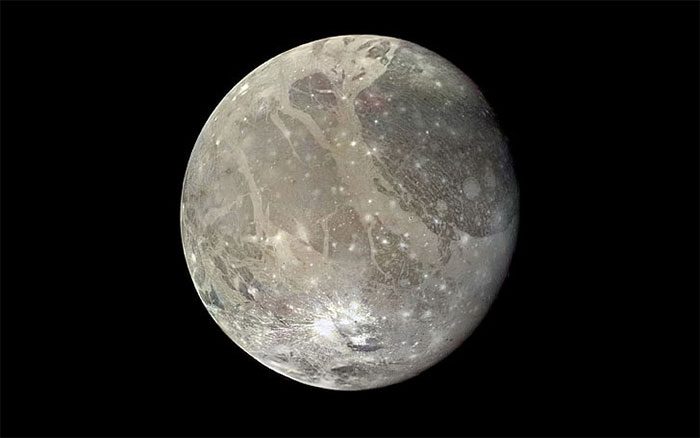In the Solar System, only two worlds have been confirmed to exhibit tectonic activity and other geological processes: Earth and Jupiter’s moon Io.
Io is extremely volcanic due to intense geological activity, but for Earth, this factor contributes to maintaining a habitable environment, playing a crucial role in the stability of atmospheric chemical composition and other elements.
However, it may not only be Earth and Io; a recently published study in the scientific journal Icarus reveals more.

Jupiter’s moon Ganymede.
Ganymede, Europa, and Enceladus are three icy moons that American and European space agencies, including NASA and ESA, as well as many other scientists, have suspected might harbor life beneath their icy oceans.
These three celestial bodies are also believed to potentially have tectonic activity, with some surface regions displaying ridge-like structures similar to fault lines on Earth, according to NASA data.
According to Sci-News, the new research conducted by the University of Arizona and NASA’s Jet Propulsion Laboratory (JPL-NASA) tested the hypothesis that smooth materials on icy satellites could form through the degradation of fault blocks triggered by seismic landslides.
This implies that tectonic activity is evidently occurring across these celestial bodies.
The findings stem from the skepticism surrounding the steep mountain ranges surrounded by relatively flat and smooth areas.
The new study measured the size of the sloped ridges, which are believed to be cracks resulting from tectonic faulting similar to those on Earth. A model was developed showing that they were created by the forces of past earthquakes, strong enough to flatten debris materials after toppling them.
This significant discovery about how tectonic activity operates on these moons will provide data guiding future missions to explore them directly — including the search for locations that could harbor life — such as NASA’s upcoming Europa Clipper mission, expected to reach Jupiter in 2030 and conduct 50 flybys of the moon Europa.
ESA has also launched the JUICE mission to explore Jupiter, which includes a detailed study of both Ganymede and Europa.
Incredible data from NASA’s long-standing Jupiter and Saturn exploration spacecraft — Juno and Cassini — is still being analyzed by scientists worldwide.


















































